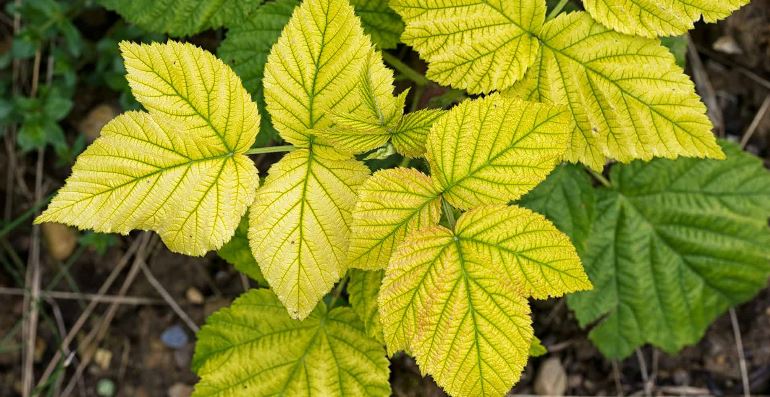
Nutrient Deficiencies
Return to Mittleider Gardening Page

Click on the Photo’s below to see a full-size image. Please see the plant deficiencies treatment chart below to see the appropriate treatment for each deficiency!
Corrective Actions for Deficiency Symptoms
Nutrient deficiencies happen from time to time in the Mittleider method. We are pushing our plants to produce 100% of what they are capable of. When the plants start out, they are getting plenty of everything they need. o, they are busy, growing, making flowers, having sex (pollinating), and making babies (the fruit we eat). Then when they have made 4-5 times the number of babies that they normally would, they start to run out of something.
Hidden Hunger is where the plant shows no signs of a deficiency, but produces less fruit and does not grow as fast or big. The difference between top yields and where a plant begins to show a deficiency is a 50% or more reduction in productivity. So, once you see a deficiency, you need to treat it, and fast! Your yield is already being reduced by 50% or more!
It is important to learn how to identify plant deficiencies. Deficiencies will look slightly different with different types of plants. The best way to learn how to identify them is to buy the Garden Doctor books by Jacob Mittleider. Many people mis-identify a deficiency as some type of disease or blight. Also, some plants just kill off older leaves, below the lower fruit sets, when they are no longer useful (Tomatoes do this). It is important to keep nutrients, like Nitrogen, Potassium, and Calcium, and Magnesium on hand and ready to go. You don't need much, because it won't happen that often.
I will place pictures of nutrient deficiencies in plants so you can see what they look like. Some deficiencies I may not have encountered before, and some I have in my own garden or others gardens. You may think you can just Google a plant deficiency, and get pictures, but there is very little reliable information out there, and it is usually incorrect.
1. Nitrogen
General yellowing of the entire plant, including the leaf veins. Thin weak, spindly plant stems and leaves. Death of the older leaves. Failure to fruit. The whole plant will yellow from the bottom to the top. Sometimes the leaves will yellow more/first, but the whole thing will just loose it’s greenness and look yellow and sickly.
For a Nitrogen Defficiency I use Ammonium Nitrate. See the link at the bottom of this page where to buy it. I have also used Urea and Calcium Nitrate in a pinch. They work, but take longer to be bioavailable to the plant.
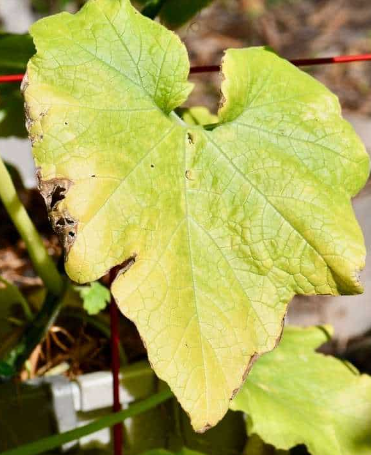
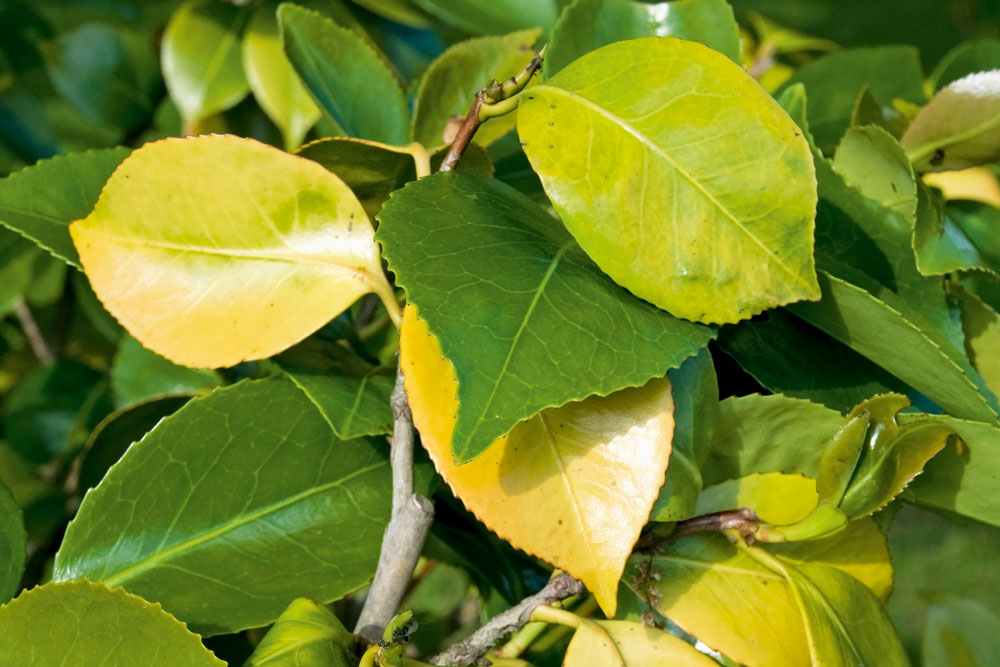
2. Phosphorus
Think Purple! It is my favorite color, but not on my plants. Thin weak and spindly plants. Red and purple colors on tops of leaves. Purplish blotches on underside of tomato leaves between the leaf veins. Poor fruit set and poor fruit quality.
I find a Poshphorus defficency to be extremely rare when using the Mittleider Weekly Feed. When using a balanced NPK fertilizer (15-15-15) to make the weekly feed. Jacob mittleiders original recipie only had 1/2 the phosphorus in it, but today, with the micro-nutrient packs and the availabiliy of balanced fertilizer's, it is much easier to make the weekly feed with the new recipie.

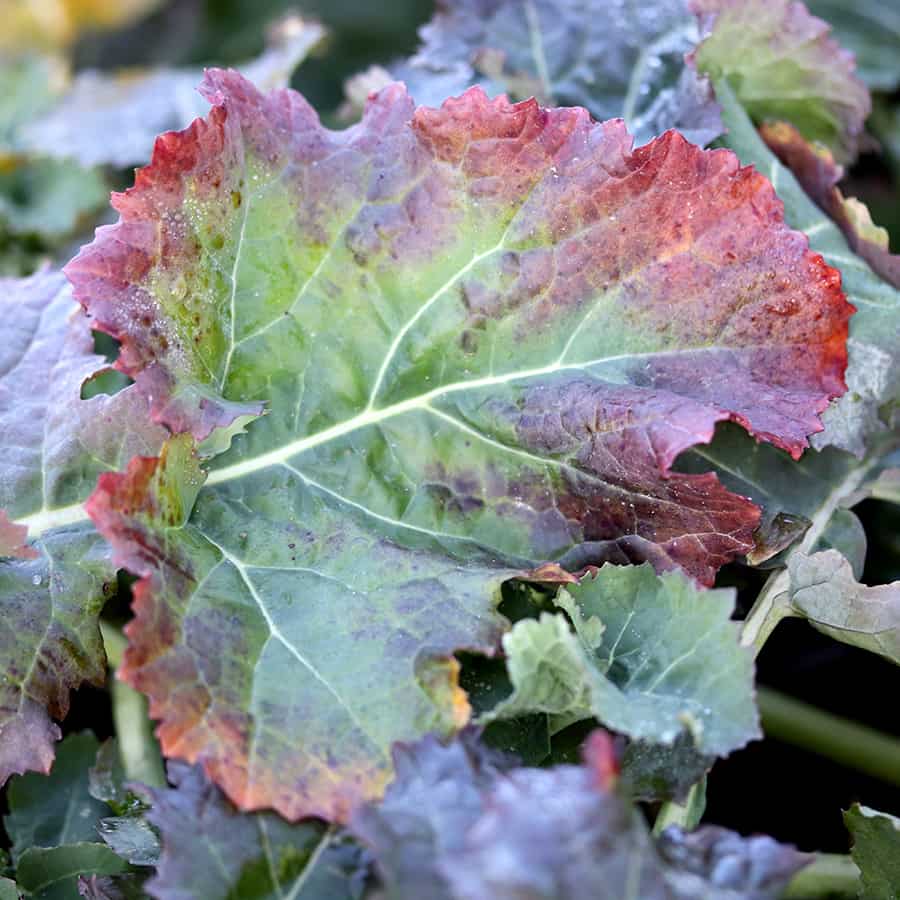

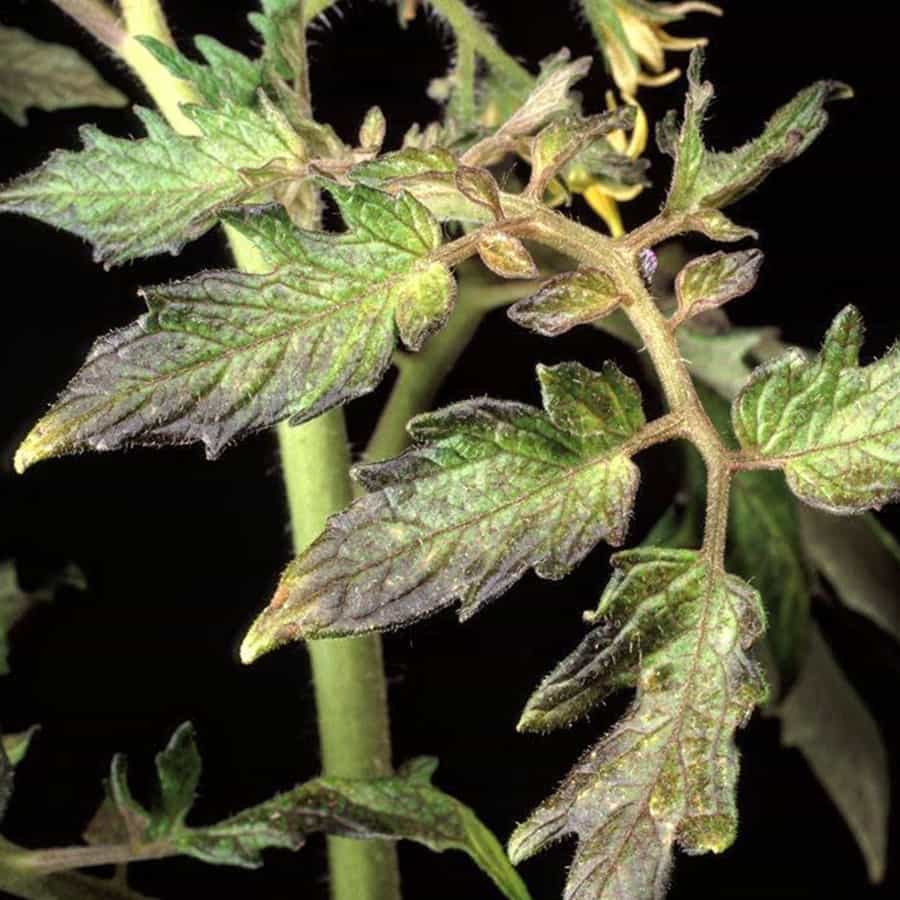
3. Potassium (K)
Firing (scorching) of the edges of the leaf or leaves. They turn yellow around the entire leaf and then brown around the entire leaf. Later brown and dry blotches within the leaf between the leaf veins. You will have poor quality fruit and a poor fruit set, and poor root growth. For grain the stems weaken and filled heads bend downward and later fall to ground.
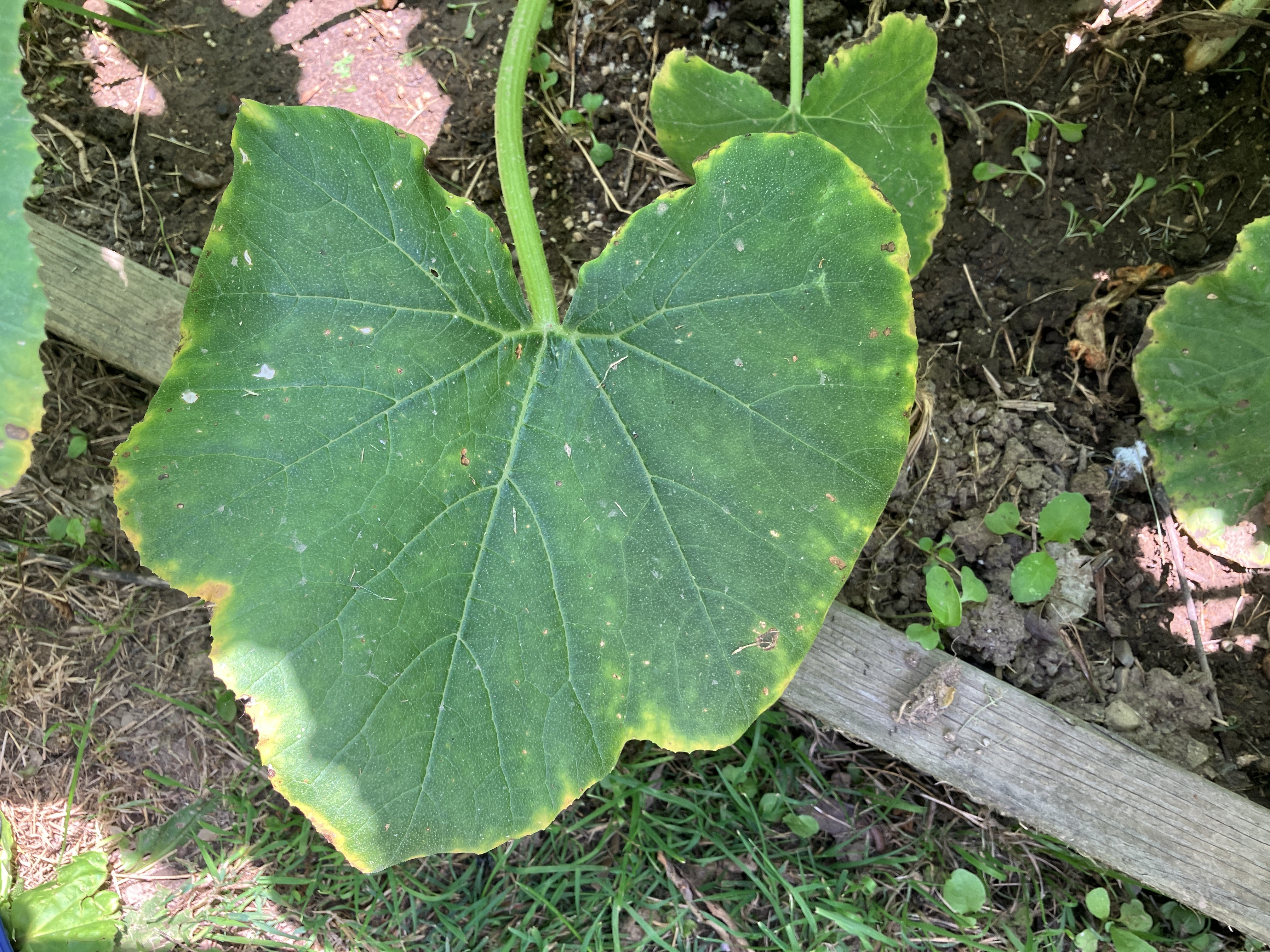
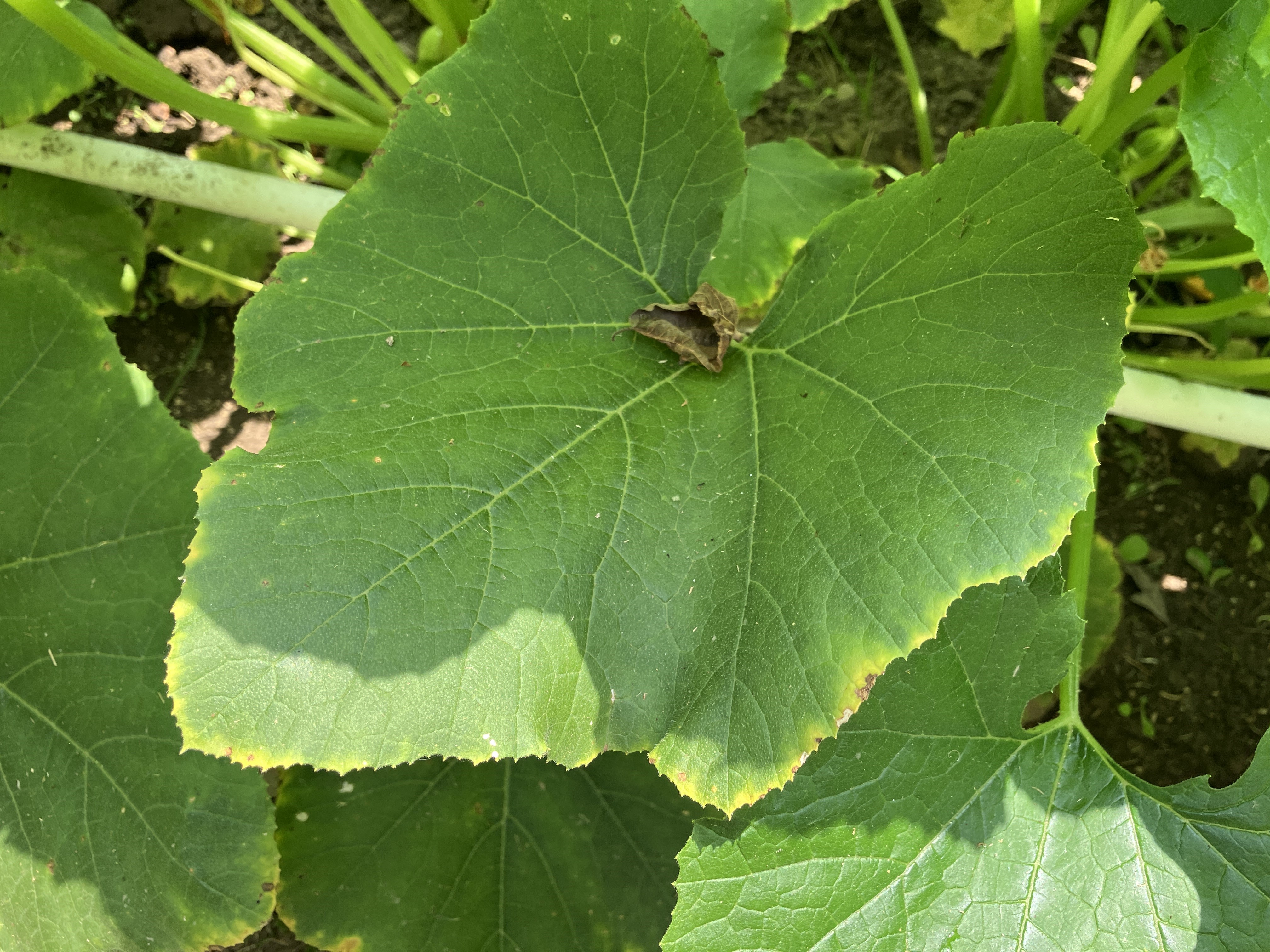
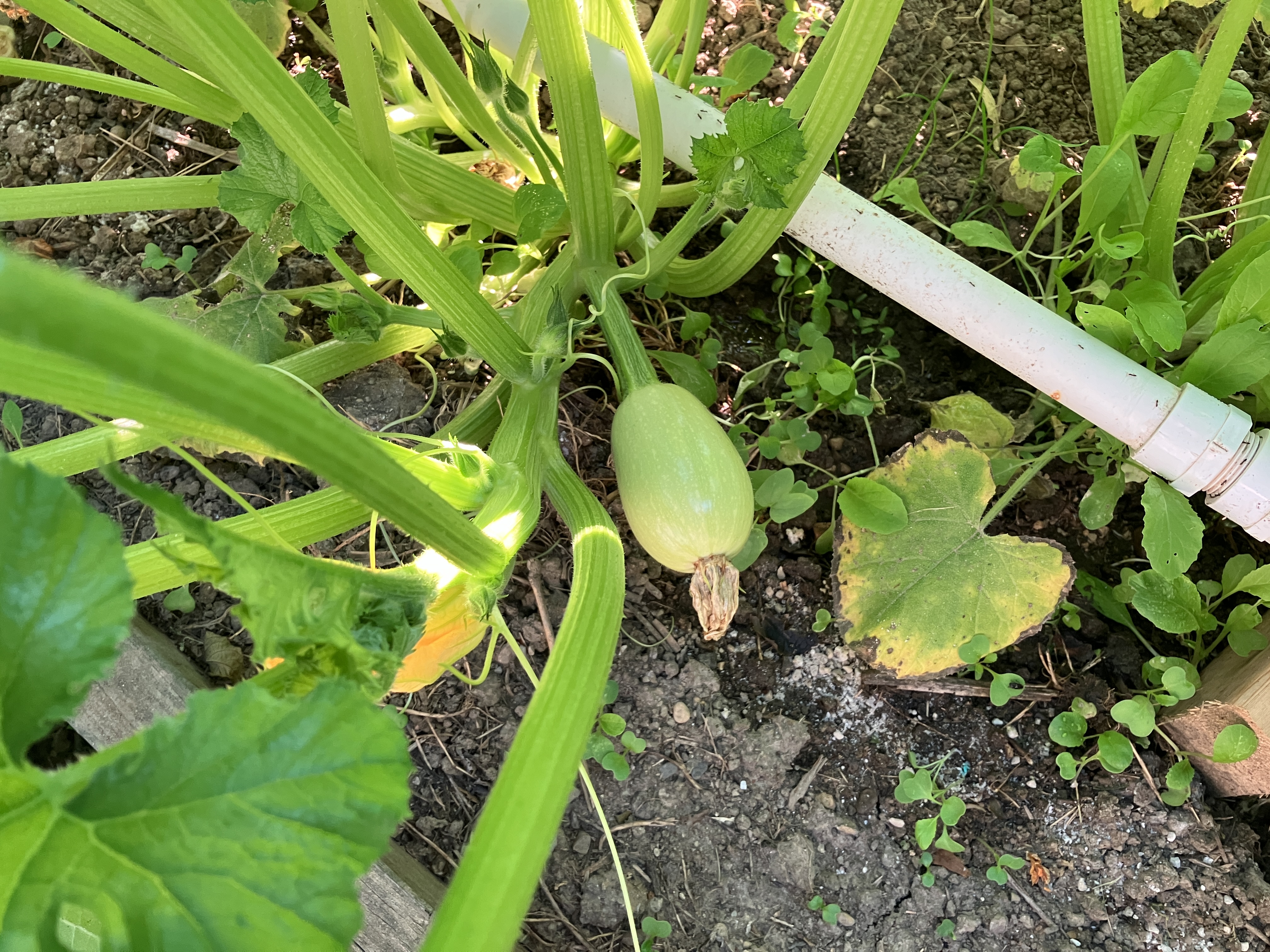
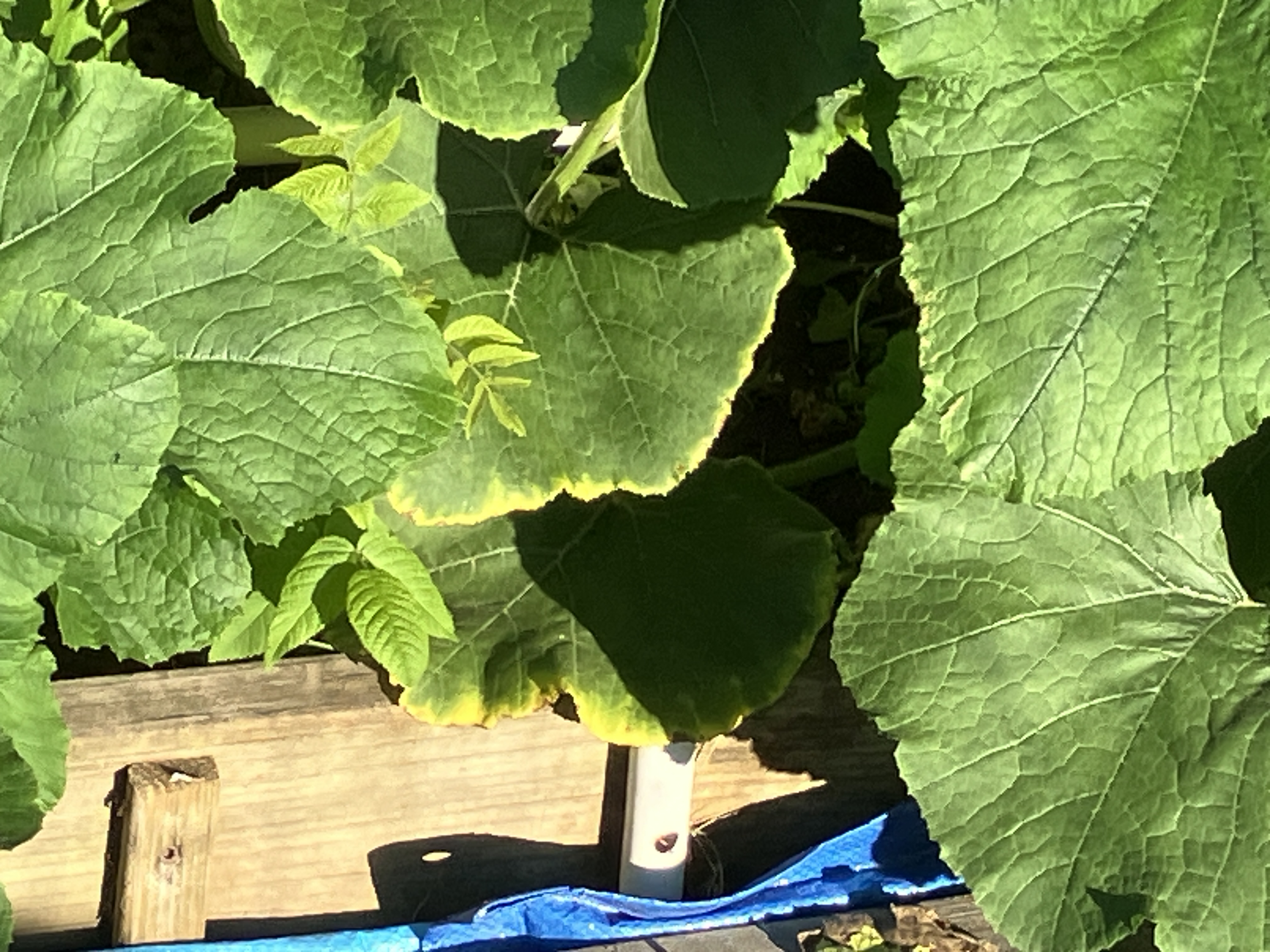
4. Calcium
Death of terminal buds of the plants. A terminal bud, also known as an apical bud or end bud, is a bud located at the tip of a plant's stem or branch where most growth occurs. It contains tiny developing leaves. Very quick and severe wilting, scorching, and death of large areas of the leaf or leaves. It can look similar to Potassium but the whole leaf will wilt and will eventually die. Poor plant color and growth of enlarged leaves. You will aslo have a poor flower set and poor fruit set. You will have blossum end rot and mishaped fruits.
On the corrective actions sheet, it will tell you to add Lime or Gypsum. I find it to be to slow acting for a fast correction. I use Calcium Nitrate to treat defficiences. I also know poeple who use Calcuim Chloride, but I find it to be too reactive with water for garden use. It also gets rock hard when you store it, if any moisture comes in contact with it, and becomes unusable. If you use caclium chloride, mix it up in some water first and then add it so it doesn't react in your garden. Calcium chloride is a very rapidly absorbable form a calcium.
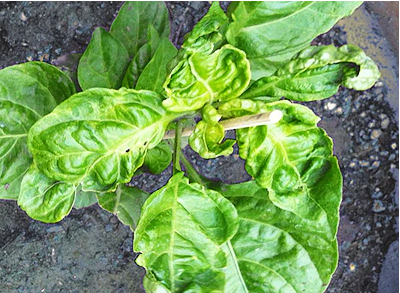
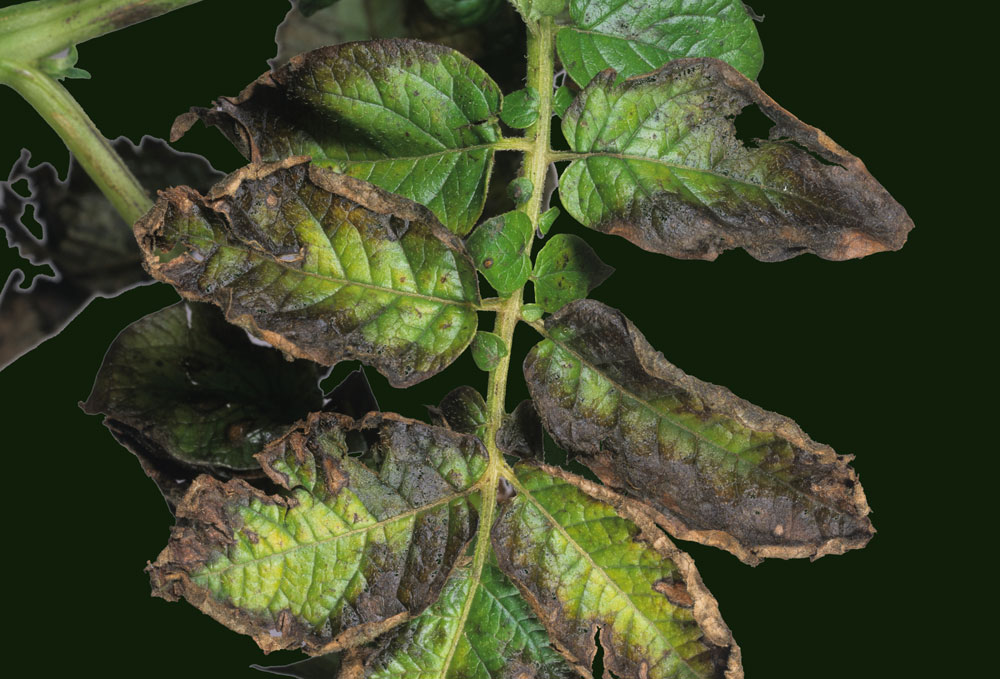
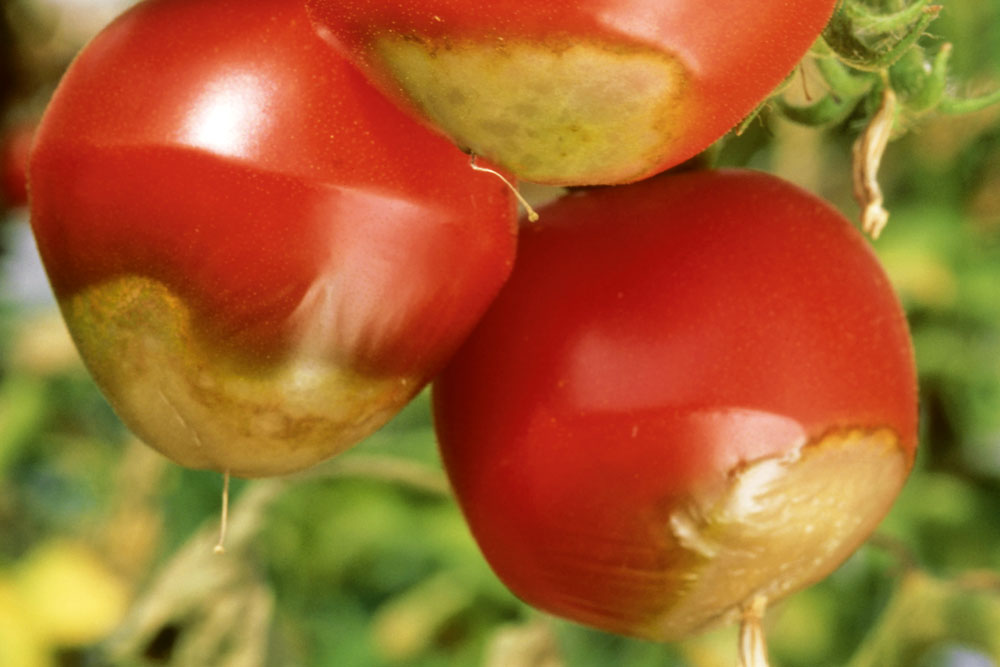

5. Magnesium
Squash and Tomatoes are high Magnesium Feeders, so it is common to see this deficiency in them. You will first see yellow patches in between the leaf veins on maturing leaves. They will later become more brightly colored. They will turn yellow, brown, and sometimes purple as the deficiency continues. This will be different than the purple color you see on tops of leaves with phosphorus, because they will yellow first. These patches will later dry up and become brown, and the leave holes in the leaf. Flowers will turn yellow and fall off. Fruits that do set, will be small have a weird shape, and won’t be large or well developed when ripening. The maturing leaves will have brighter and brighter colors, and they will turn yellow, brown, and sometimes purple.
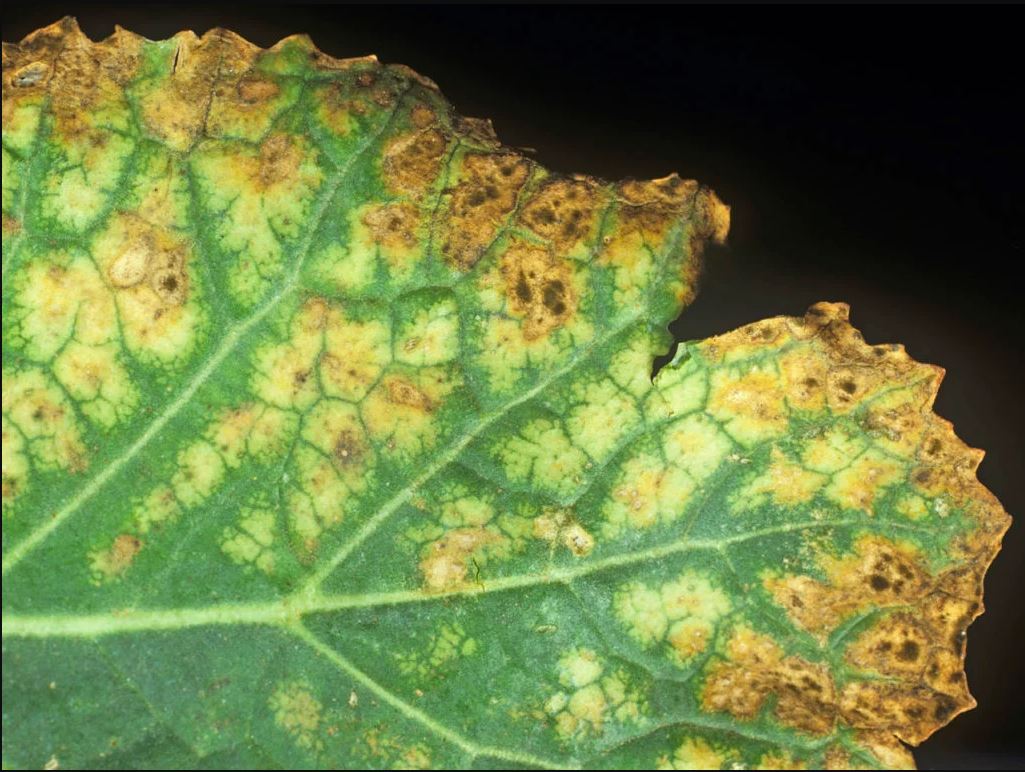
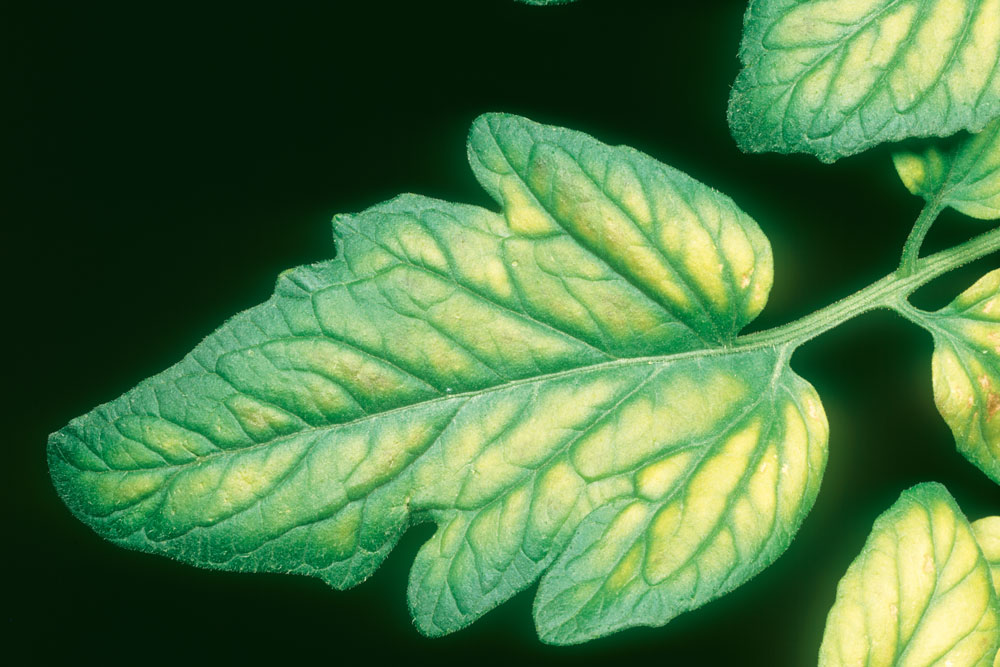
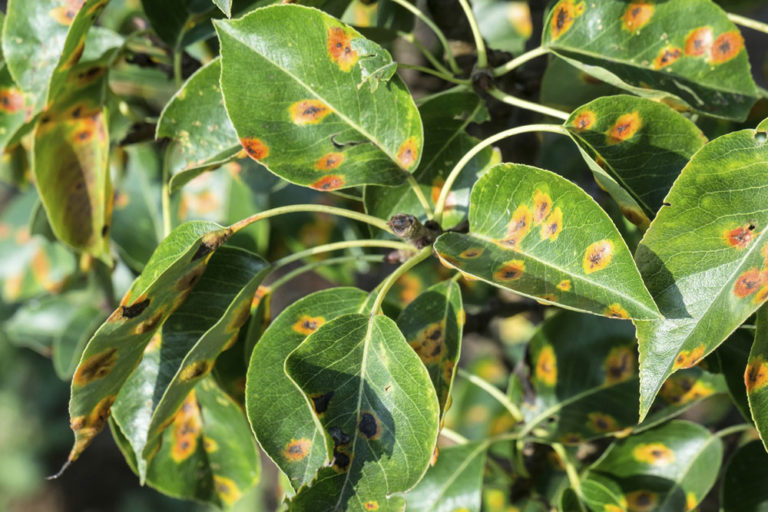
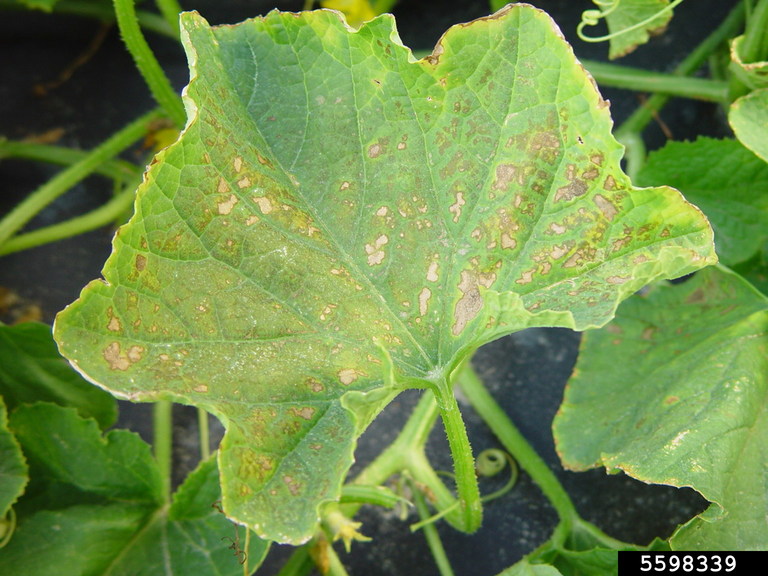
6. Boron
I have never seen a boron deficiency in my garden, or in person, in any garden. The symptoms are death of the terminal bud. Necrosis of growing tips (terminal buds), bushy and dull appearance. A terminal bud is also known as an apical bud or end bud; it is a bud located at the tip of a plant's stem or branch where most growth occurs. It contains tiny developing leaves. Also, you will see enlarged cotyledons and the will have a leathery appearance. Cotyledons are the seed leaves in plants; they are the first leaves to appear from a germinating seed. A rosette development about the terminal bud area. A rosette development is where the terminal bud stops growing or dies, and all new leaves grow out from below it. Kind of like a dandelion; all the leaves come from the bottom of the plant because it is a rosette plant. This growth pattern will appear in the terminal bud. Black hearts in tubers, and brown/black hearts in brassicas (cabbage, cauliflower, broccoli, Brussel sprouts, etc.)
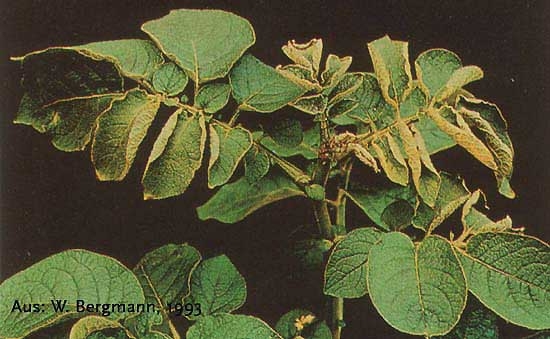
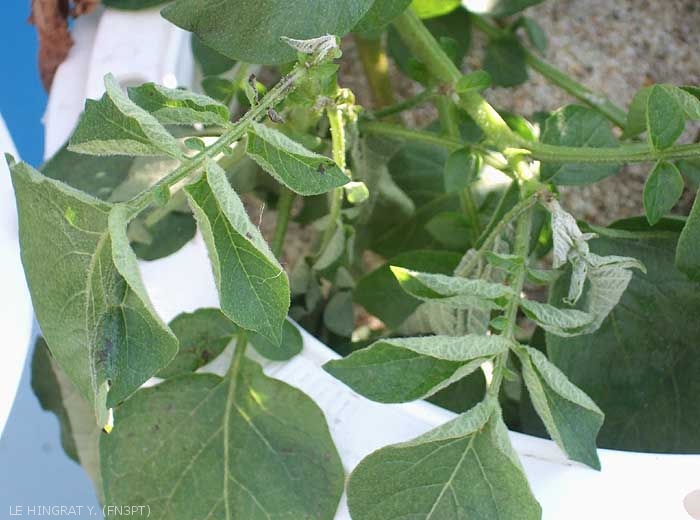
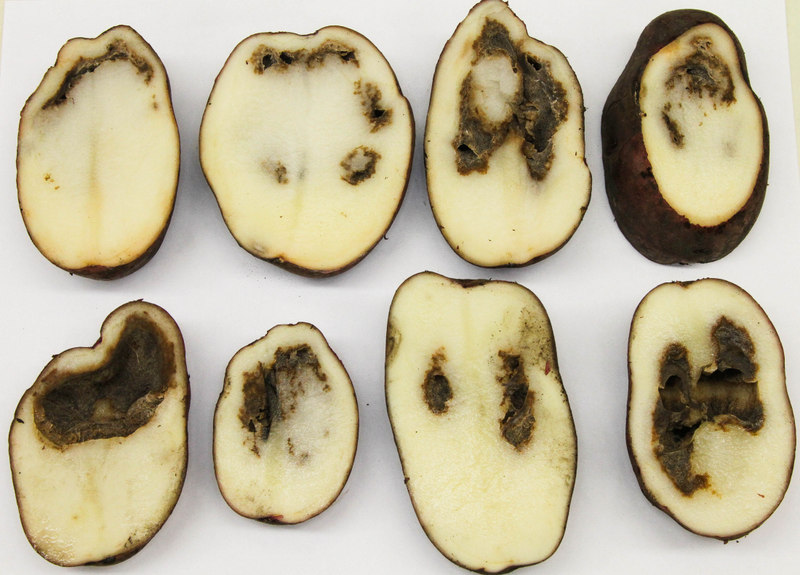
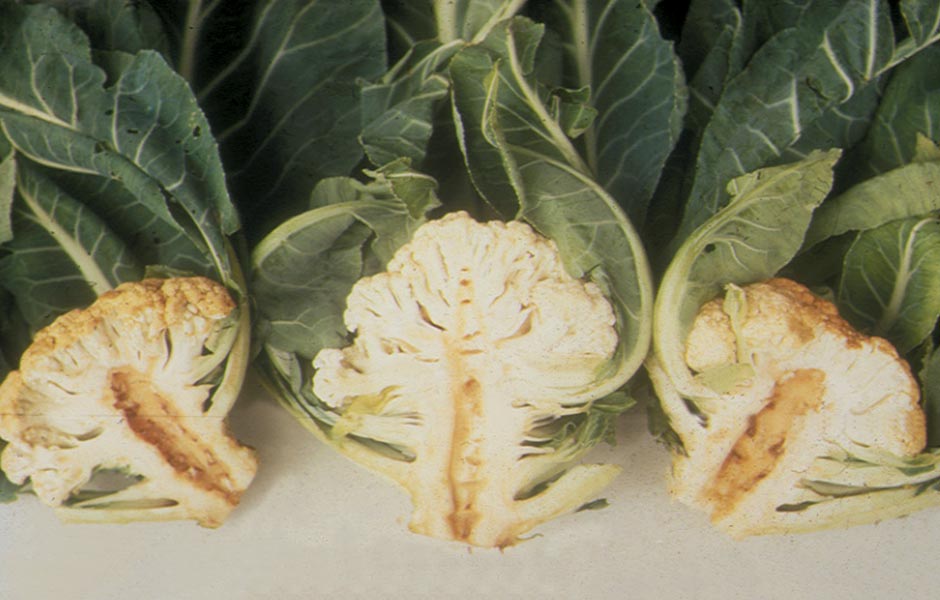
7. Iron
I have never seen an iron deficiency in my garden, or in person, in any garden, but I have seen it quite often on the Mittleider Facebook group. Bleached yellow color between the veins of the young leaves. The leaf veins remain dark green color. Unlike a nitrogen deficiency where the whole leaf and plant will yellow. The more mature leaves will turn yellow, dry out, and fall off. The general growth of the whole plant will be stunted. The leaves and flowers fall off prematurely.
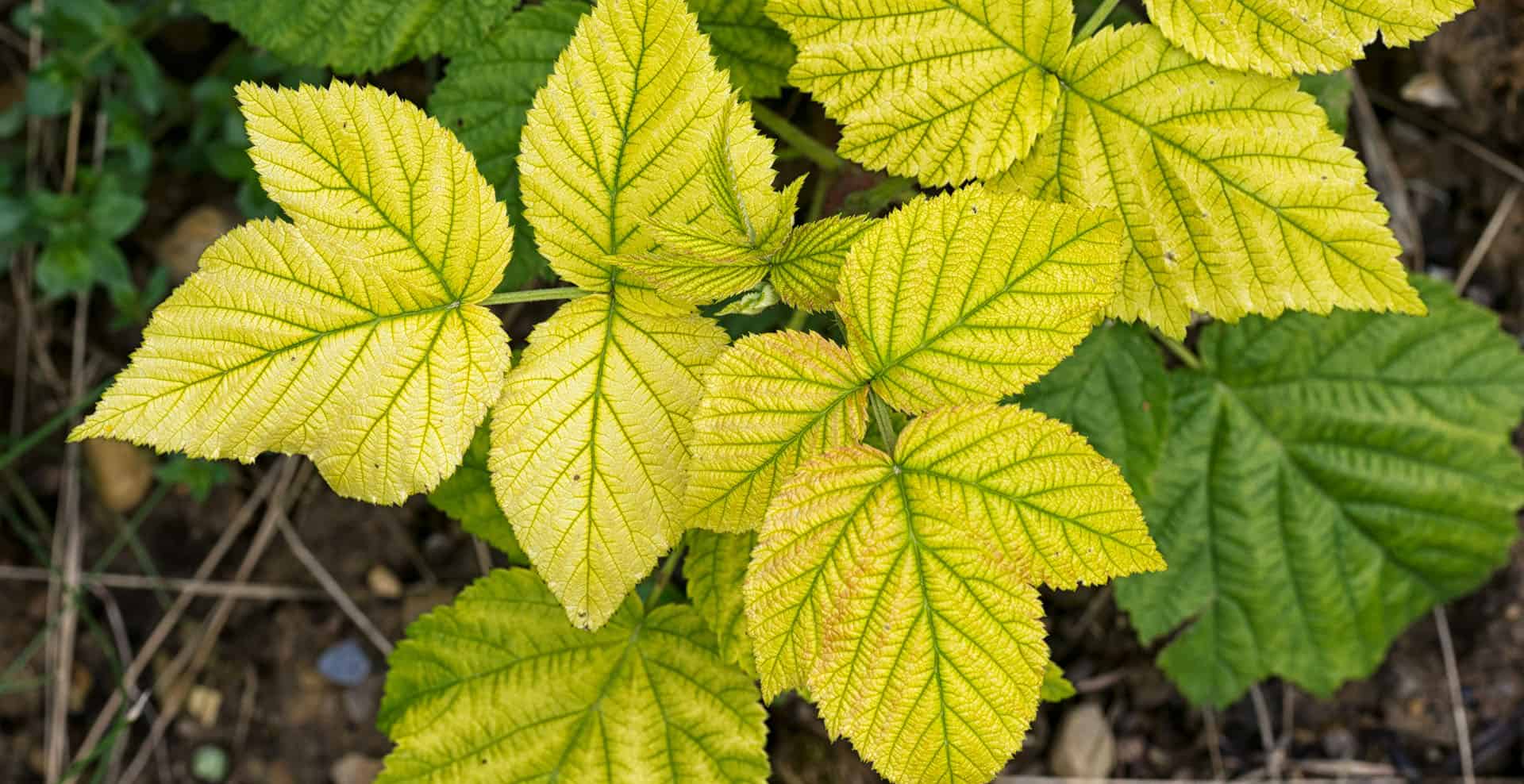
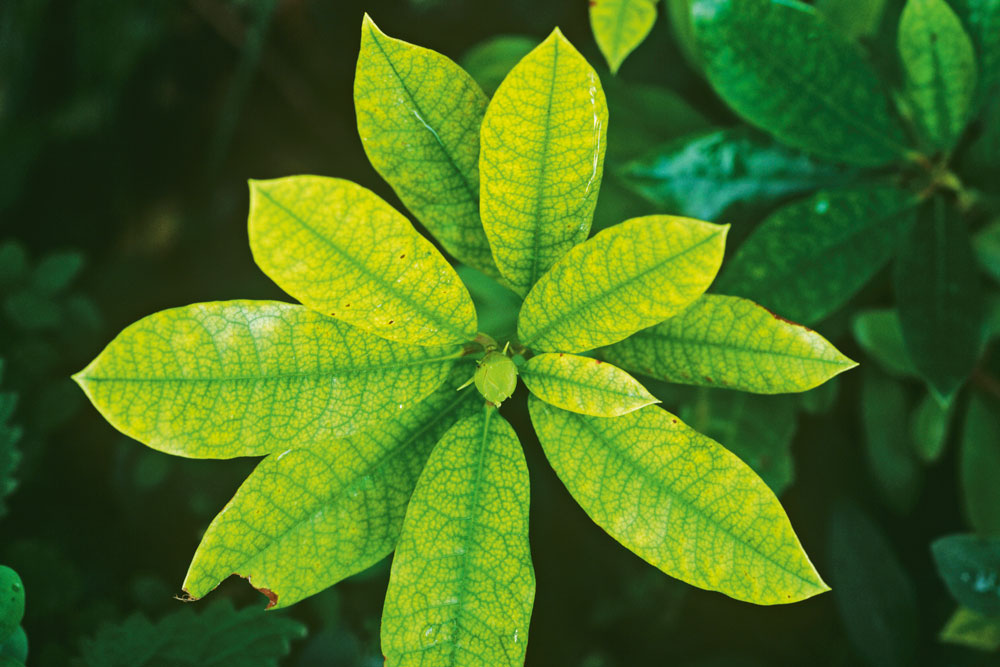
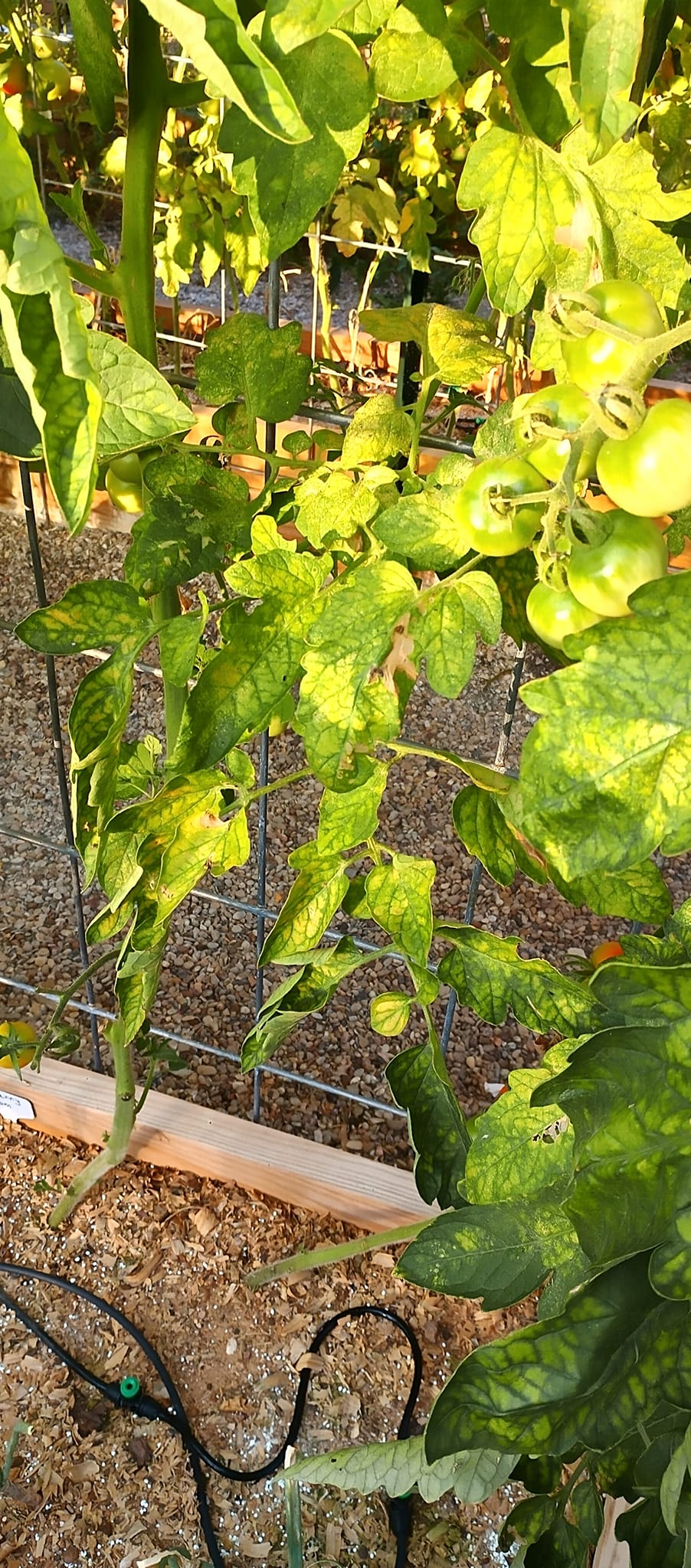
8. Molybdenum
I have never seen a molybdenum deficiency in my garden, or in person, in any garden. It is also known as “Whiptail disease or disorder” (narrow long leaves with twisted patterns) in cabbage, broccoli, and cauliflower. In the young plants the deficiency symptoms are chlorosis of the leaf margins, and the whole leaves may turn white. The leaf blades do not develop properly. When such deficiency is severe, only the midribs develop. Cracked stems if celery brown checking, scratch, or adaxial cracked stem. Ruptured cells in leaves of affected plants. There will be a loss of living green color, flower drop, and a poor fruit crop.
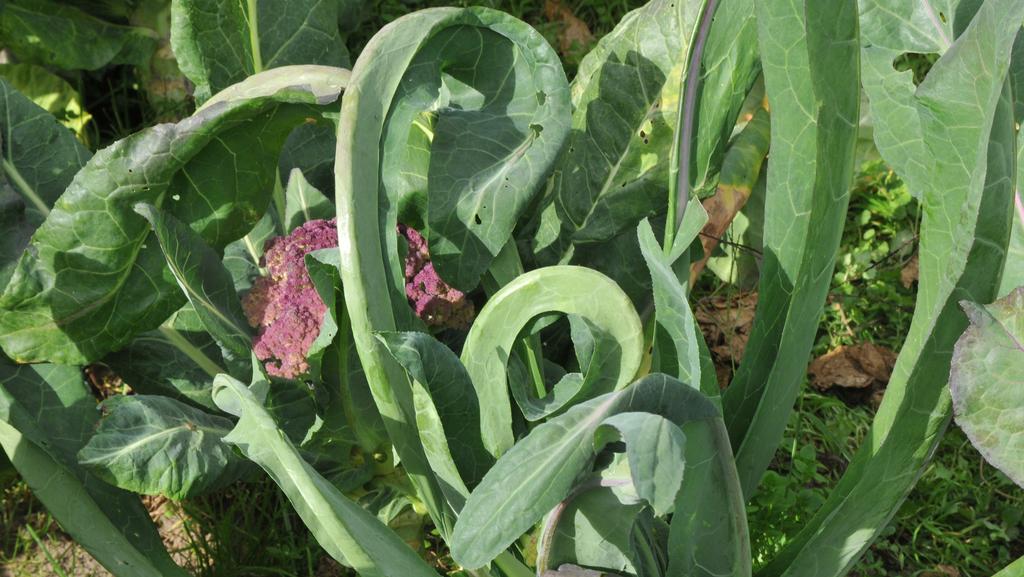
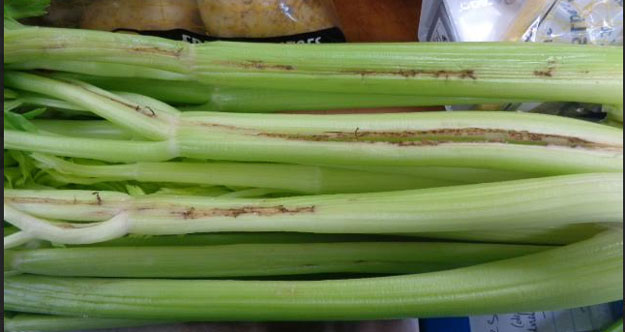
9. Sulfur
I have never seen a sulfur deficiency in my garden, but I did it once in a school garden. They showed me their oganic Garden that they planted, and were proud of it. I said can I take some pictures, this is a very severe example of plants with a sulfur deficiency. I think it hurt their feelings, and I did not get pictures. I wish I would have just asked for pictures, and not said anything about the sulfur! You don't see sulfur deficiency often, but when you do there is no mistaking it!
You will have creamy white to light yellow color of entire leaf or leaves of the terminal buds, and eventually death of the terminal buds. A terminal bud, also known as an apical bud or end bud, is a bud located at the tip of a plant's stem or branch where growth occurs, and it contains tiny developing leaves. It will start from the stem of the leaf, and move its way outwards on the leaf. The leaf veins will often be darker (more purplish) at first. As it progresses there will also be a creamy white color of older leaves. Eventually, the older the older leaves die and fall off the plant.
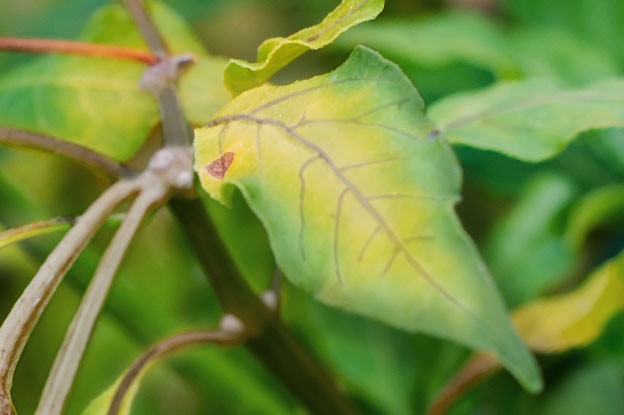
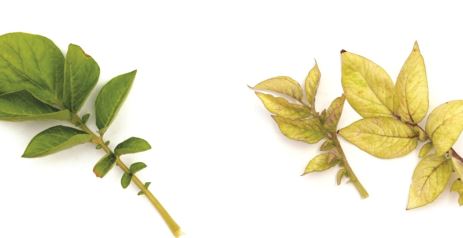
10. Manganese
I have never seen a manganese deficiency in my garden, or in person, in any garden. Manganese deficiencies are most likely in alkaline soils. Predominant symptoms of manganese deficiency resemble those of iron and sulfur. Usually, they are more clearly identified by their descriptive names, such as “Gray speck”, “White Streak”, “Dry Spot”, and “Yellow Disease” in spinach and beans. The young leaves of manganese deficient plants show interveinal yellowing and tend to curl upwards. As the severity of the deficiency progresses, smallish brown to black necrotic spots develop on the leaves, especially along the veins.
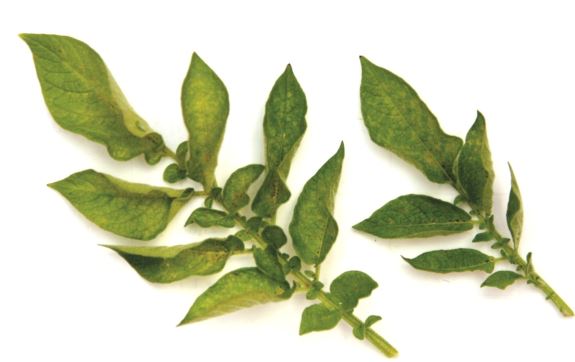
11. Copper
I have never seen a copper deficiency in my garden, or in person, in any garden. Copper is a nutrient that is needed in very tiny amounts, and normally, all soil has enough copper in it, or your weekly feed has plenty. A Copper deficiency is extremely rare. It has a pale-yellow color that are sometimes in stripes and curled leaves. The young leaves of copper deficient plants curl upwards, where after the leaf tips turn brown and become necrotic. The size of leaves is normal, and apart from the upward curling and tip browning, have a normal green color at first.
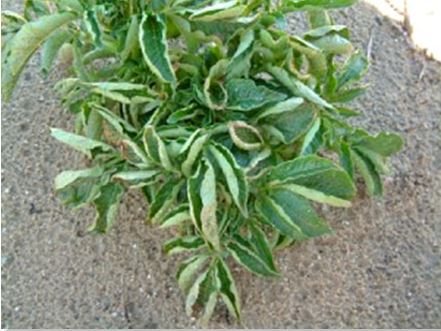
12. Zinc
I have never seen a zinc deficiency in my garden, or in person, in any garden. Small terminal leaves referred to as “little leaf” in fruit trees. They will have severely reduced fruit-bud formation. You will have small, seedless pods in some vegetable crops, and streaks of yellow, and long bands of yellow in the leaves of some crops. There will be red firing on orange-yellow leaves with green veins. The young leaves of zinc deficient plants have narrow, yellow leaves that curl upwards. As severity of the deficiency increases, scorching of the leaf tips and margins may develop. Zinc deficiencies are most common in alkaline soils.
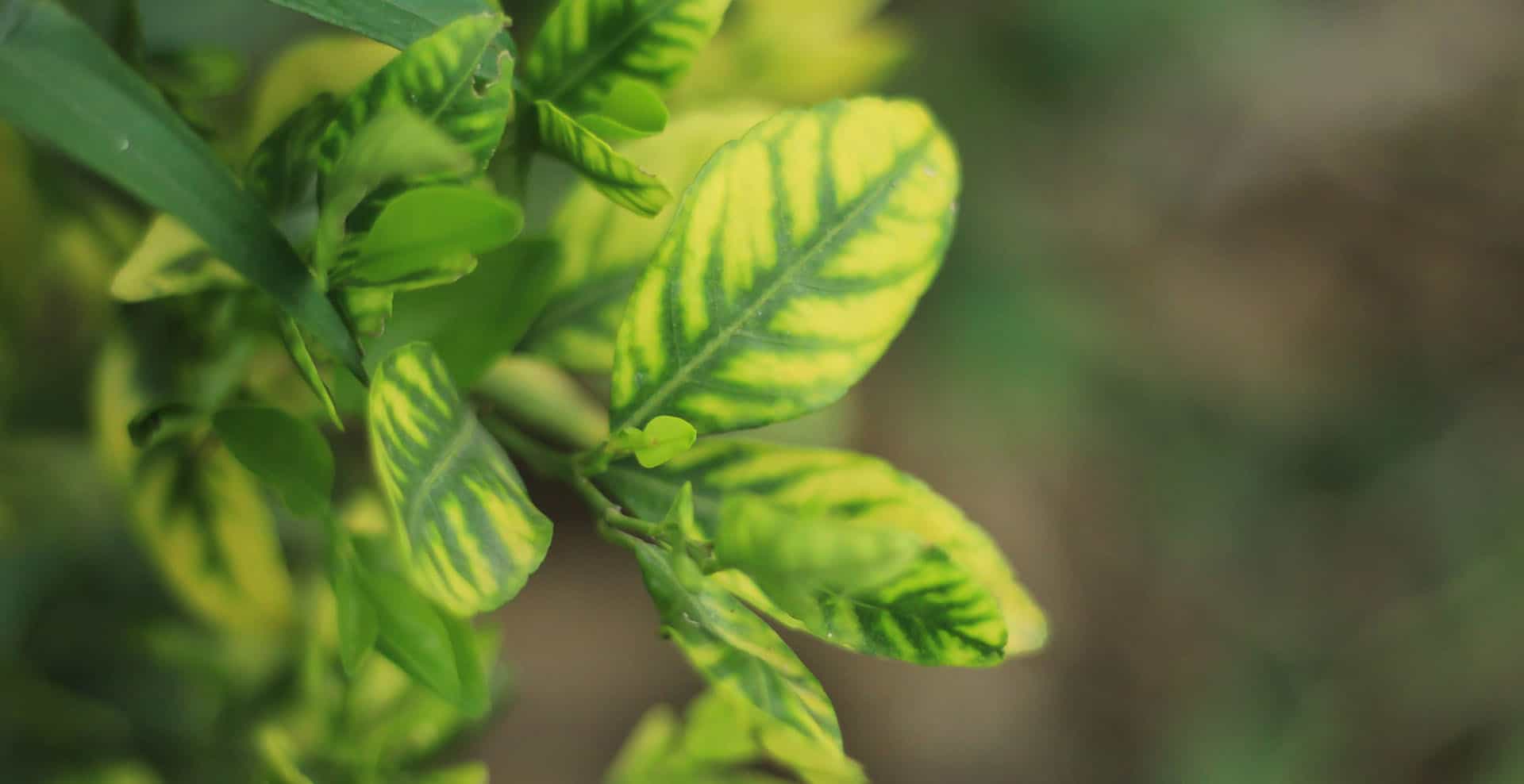
13. Chlorine
I have never seen a chlorine deficiency in my garden, or in person, in any garden. I have no pictures or what it looks like. Unnatural wilting of the plants. Resembles the symptoms of excess nitrogen and excess salt.
Deficiency Items
These are the 5 nutrients that I use to treat deficiencies that I have seen in my garden. The calcium nitrate is great for adding caclium to your soil that is immediately available to the plant. It is also goood for treating nitrogen deficienies. The potash is for treating potassium deffciencies. The borax is for boron. I have not seen a boron defficiency, but I have it to make my pre-plant fertilizer. The epsom salt is for magnesium, and the ammonium nitrate is the best and fastest acting nitrogen. I also used it for transplanting seedlings. The 3 main defficiencies I see in my garden are Potassium, Magnesium, and Calcuim listed in order from most to least common.
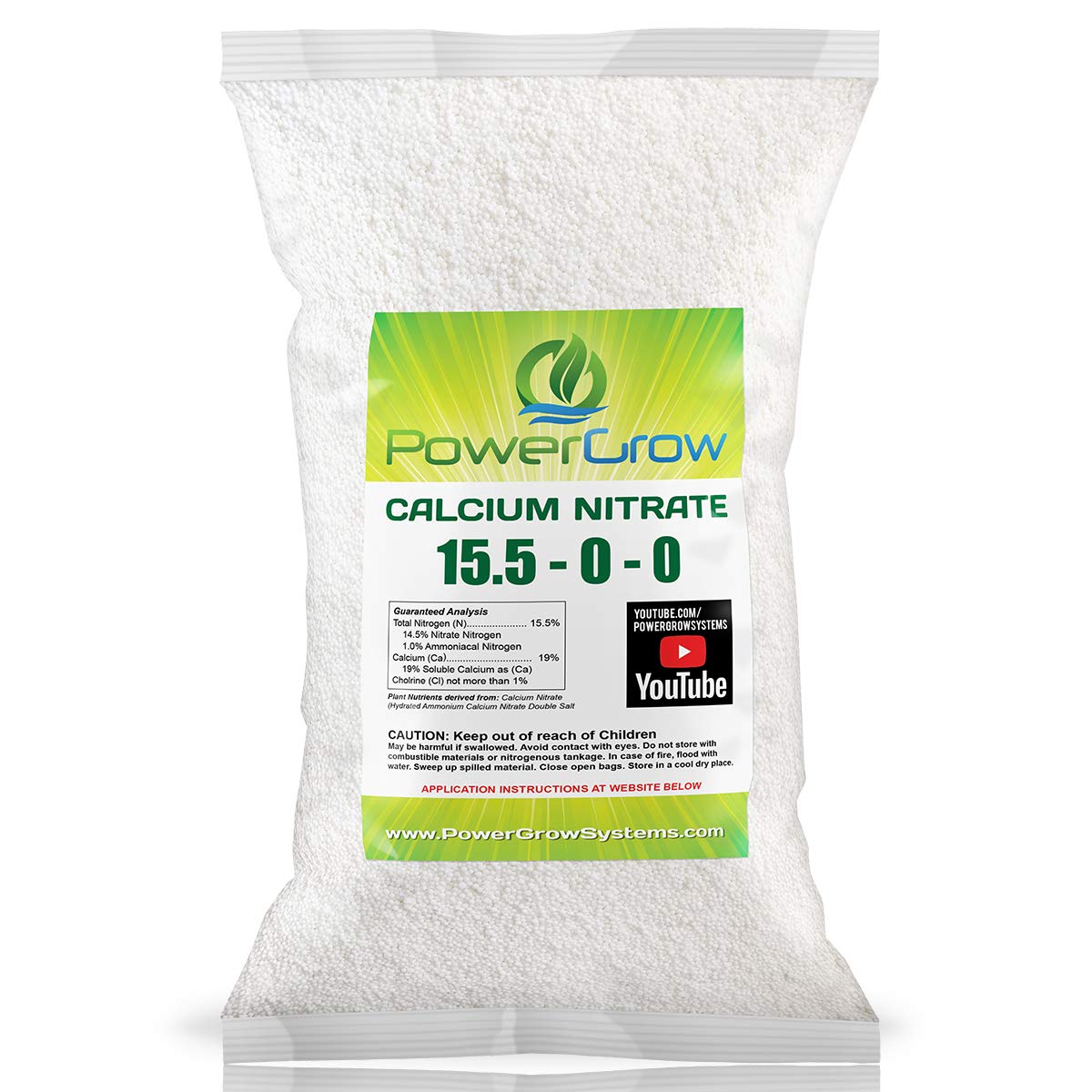
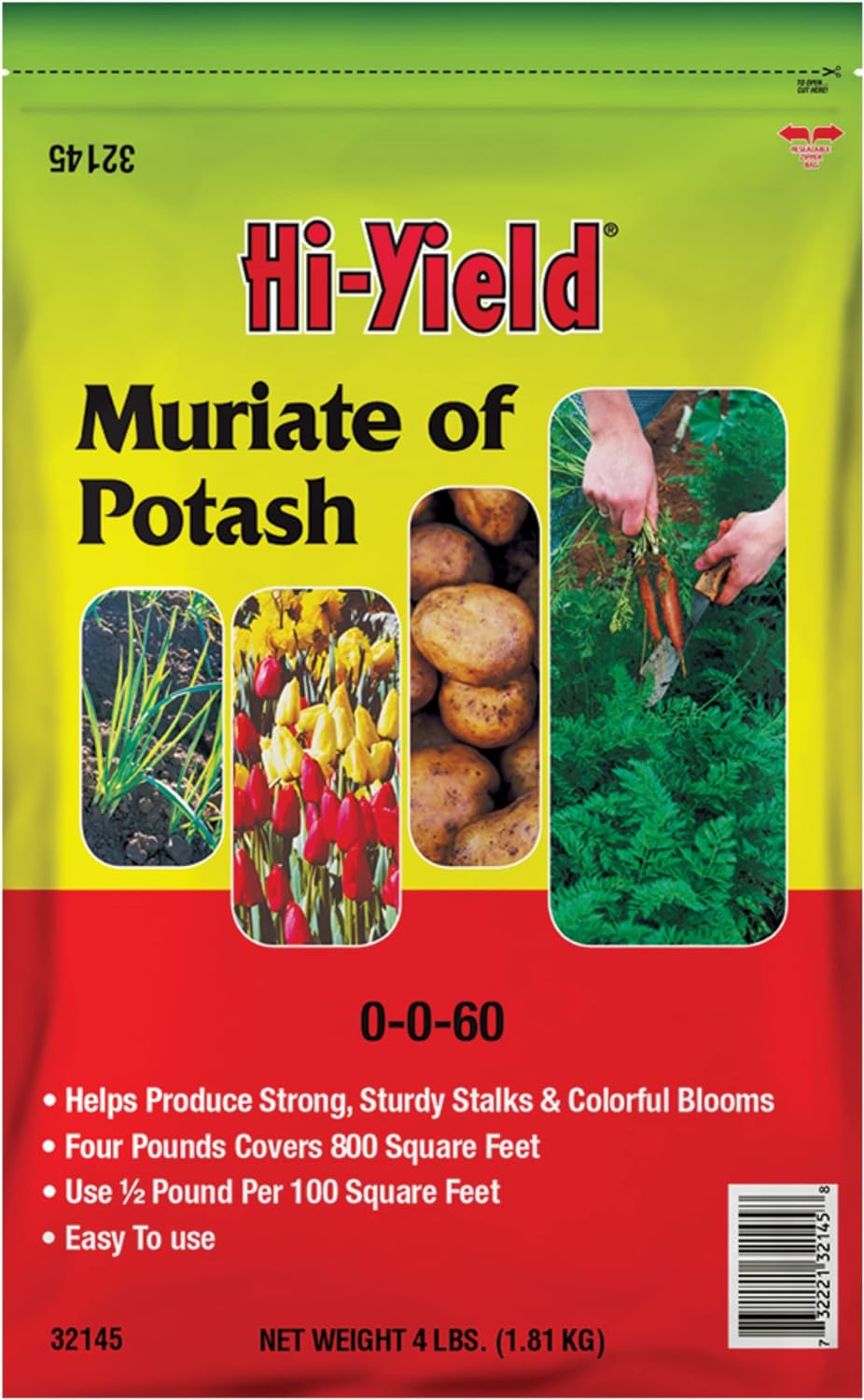
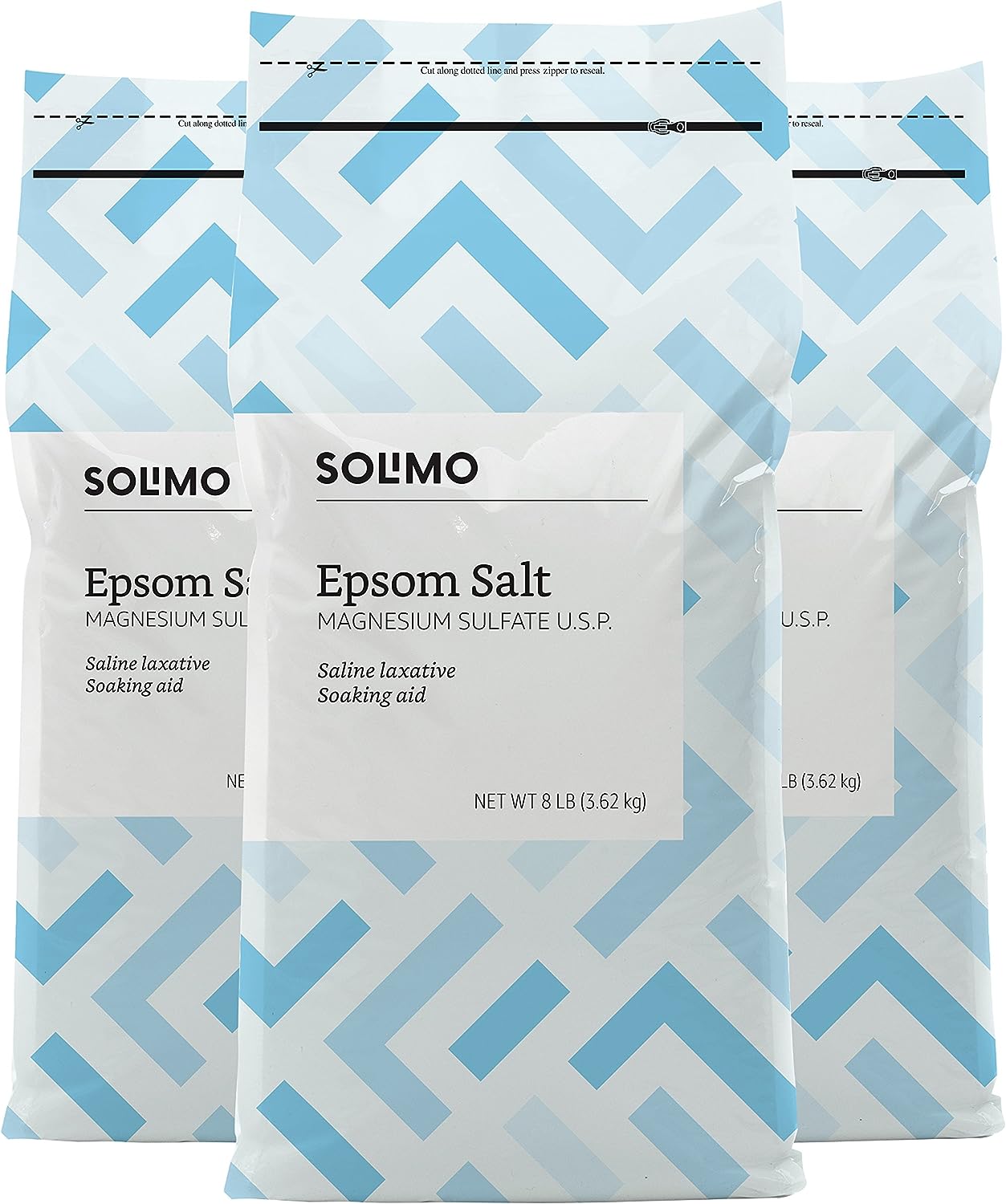

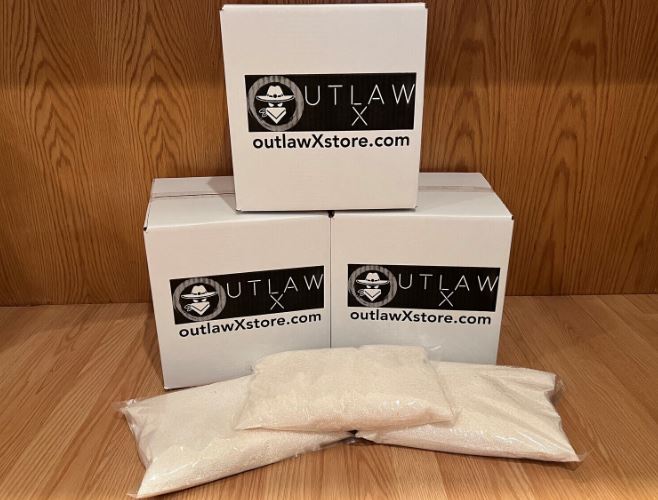
Return to Mittleider Gardening Page